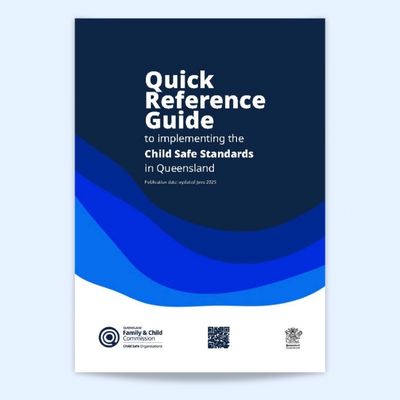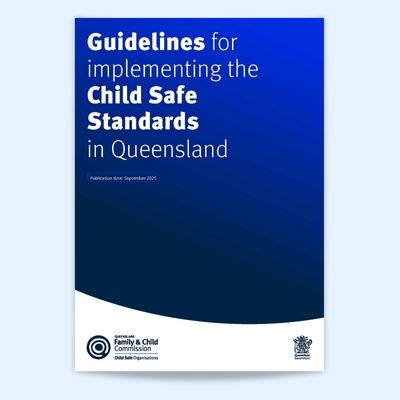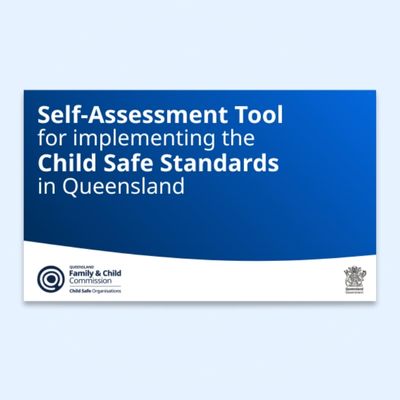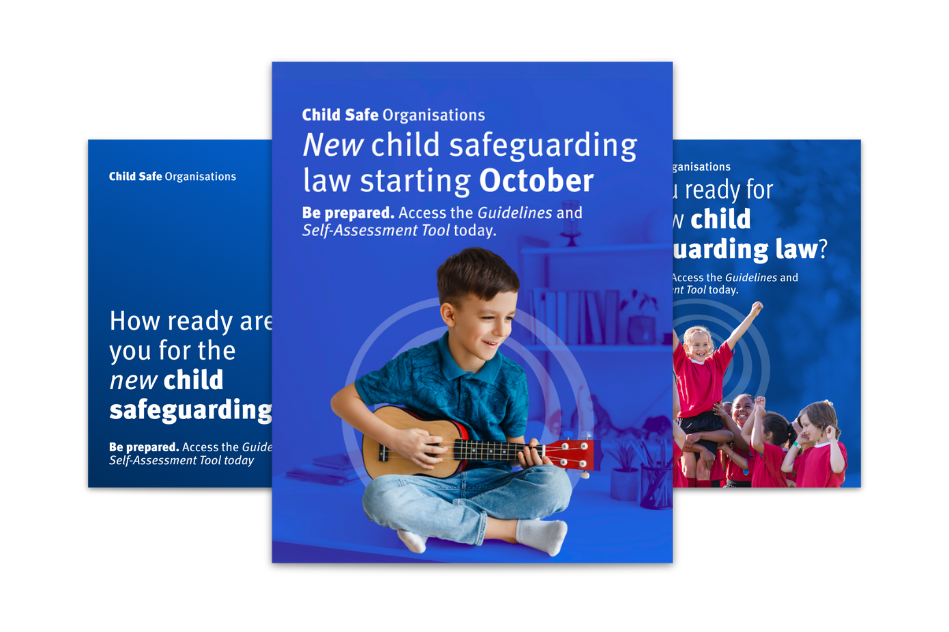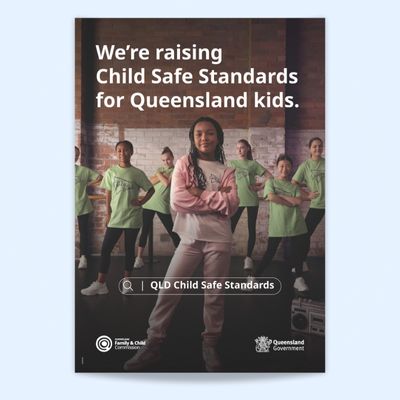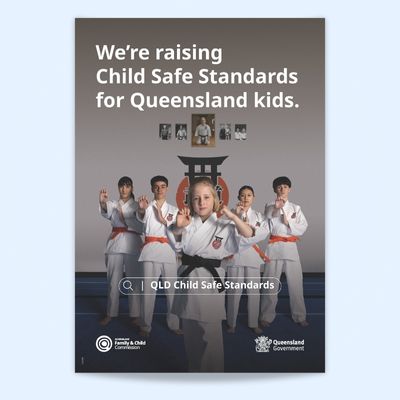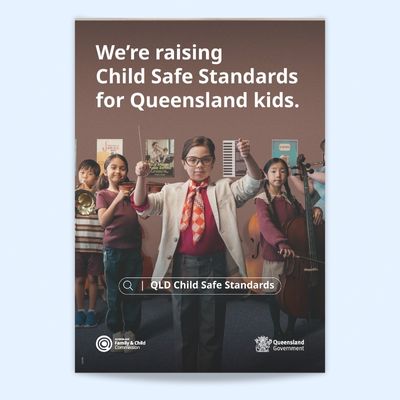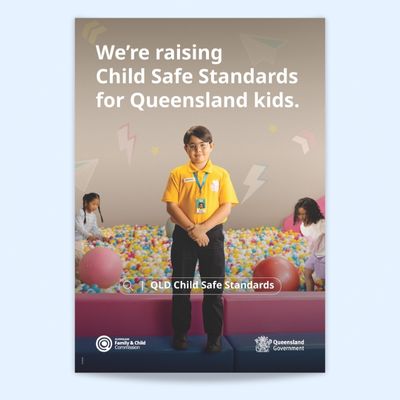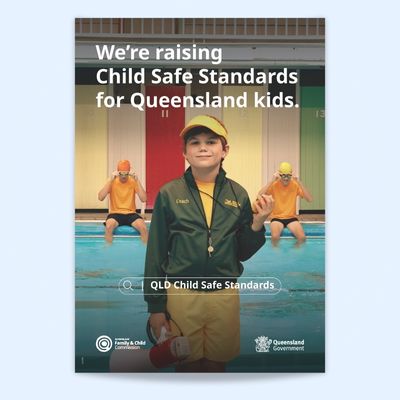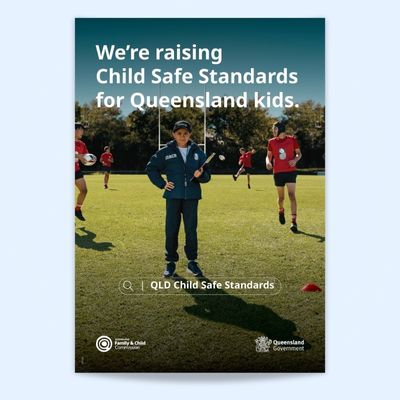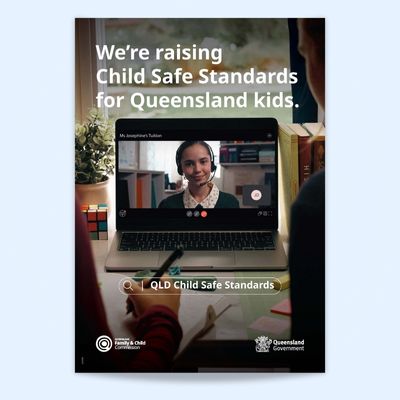- Home
- Child Safe Organisations
- ...
- Resources
Queensland's new child safeguarding law introducing Child Safe Standards commenced from 1 October 2025. Find out when you need to comply.
Changes to the Child Safe Organisations Act mean the Reportable Conduct Scheme has been brought forward and will now commence for all reporting entities on 1 July 2026.
- Find out more about the scheme
- Check if your business or organisation needs to comply.
This page has links to resources that will help you embed the Child Safe Standards and the Universal Principle into your organisation’s policies and practices, so that you can meet your obligations under the Child Safe Organisations Act 2024.
Whether you are just beginning or have already made significant progress to becoming child safe, these resources can help you identify what you are doing well and highlight action needed to embed children’s safety and wellbeing into your policies, practices and culture.
More resources for the implementation of the Reportable Conduct Scheme will become available later this year.
Visit our Training hub for learning and development resources.
Guidelines and Self-Assessment Tool
These resources have been developed to help you implement the Standards and the Universal Principle in your business or organisation. The way you implement them will rely on your unique situation and how your business or organisation operates, so these resources are not proscriptive or intended to operate as a one-size-fits-all checklist. They provide a range of things for you to consider and adapt depending on your business or organisation.
We are continually updating these resources as implementation of the Child Safe Organisations system progresses and in response to organisations’ needs and feedback.
Key documents
There are some key documents you may need as part of your work to become child safe.
This is not an exhaustive list, and you may need to develop other documents or resources to implement the Child Safe Standards. As with all aspects of implementation, there is no one-size-fits-all approach – the steps you will need to take will depend on the individual circumstances relevant to your business or organisation.
These documents provide a good foundation for you to build on.
- explains how you prioritise the safety of children and young people and will not tolerate child abuse and harm
- affirms your commitment to listen to and empower children within the organisation
- is displayed for public access in your physical and/or online environments.
A charter of commitment has been developed by the Australian Human Rights Commission for the National Principles as a tool to support organisations create their own version.
- sets out how you prioritise the safety and wellbeing of children and take action to prevent harm
- details how you have updated your policies and practices to reflect the Child Safe Standards and Universal Principle
- defines acceptable and unacceptable interactions with children, relating to staff members, volunteers, other children and anyone who comes into contact with children while involved with your business or organisation
- is publicly available or can be made available on request.
The Australian Human Rights Commission has developed a template outlining what an organisation’s child safety and wellbeing policy should contain.
- sets out expectations for behaviour of staff and volunteers with children and for promoting and maintaining children’s safety and wellbeing
- lists acceptable and unacceptable behaviours with children
- explains professional boundaries, ethical behaviour, expected standards of behaviour, and acceptable and unacceptable interactions
- explains how your business or organisation will respond to breaches of your Code of Conduct
- is publicly available or can be made available on request.
The AHRC has provided an example Code of Conduct to be used for Child Safe Organisations.
The NSW Office of the Children’s Guardian has developed both a guide and an editable template that reflects the AHRC resource.
- is linked to a Code of Conduct
- describes your complaints process in an accessible way that can be understood by everyone involved with your business or organisation, including children
- is publicly available and promoted to everyone who interacts with your business or organisation
- includes procedures for keeping families and carers informed and provides guidance on how to do this while complying with obligations regarding confidentiality and privacy
- sets out approaches for dealing with different types of complaints including concerns, suspicions, disclosures and allegations of harm and breaches of the Code of Conduct
- sets out actions to be taken when the complaint is about a worker
- sets out the support and assistance provided to people who make a complaint
- refers to relevant regulatory requirements applicable to the business or organisation
- requires that all staff and volunteers cooperate with relevant external authorities, including police.
- identifies, assesses and takes steps to minimise the opportunity for children to be harmed
- focuses on preventing child harm, including child-to-child harm
- considers increased risk with specific roles and activities and children with heightened vulnerability, for example, children with a disability
- is outlined in policies and procedures and included in training for staff and volunteers
- contains procedures for review.
Organisations that develop and embed Foundation Documents will be well-positioned to be compliant with the Universal Principle and Child Safe Standards. Foundation Documents are core policy/procedural resources that must be in place before further progress can be made in implementing the Universal Principle and Child Safe Standards.
- A charter of commitment has been developed by the Australian Human Rights Commission (AHRC) for the National Principles as a tool to support organisations create their own version.
- The AHRC has developed a template outlining what an organisation’s Child Safety and Wellbeing Policy should contain.
- The NSW Office of the Children’s Guardian has created a handbook to understand and develop a child safe policy
- The AHRC has provided an example Code of Conduct to be used for Child Safe Organisations.
- The NSW Office of the Children’s Guardian has developed both a guide and an editable template that reflects the AHRC resource.
- The NSW Office of the Children’s Guardian has produced a set of templates and samples.
We welcome your support in promoting these resources among your networks so that we reach as many Queensland organisations as possible. You can find shareable resources for your communications channels below.
To download the images, please click on image, when it opens, right click and 'Save Image As'.
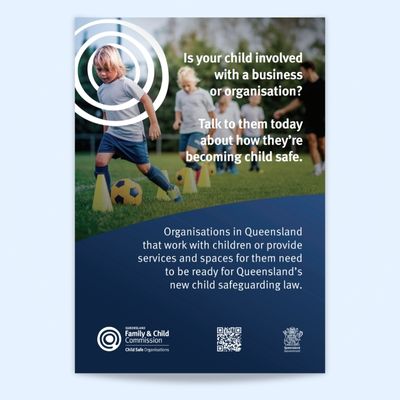 | 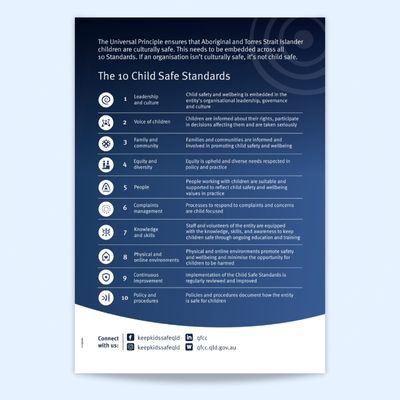 | 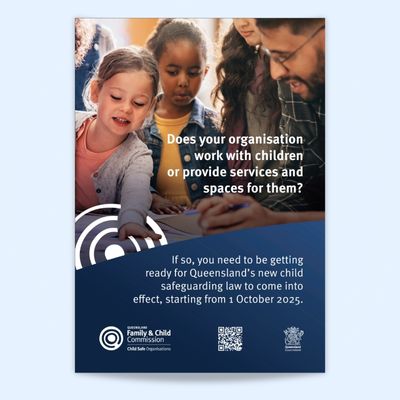 |
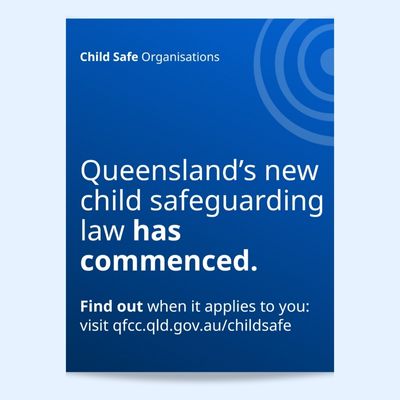 | 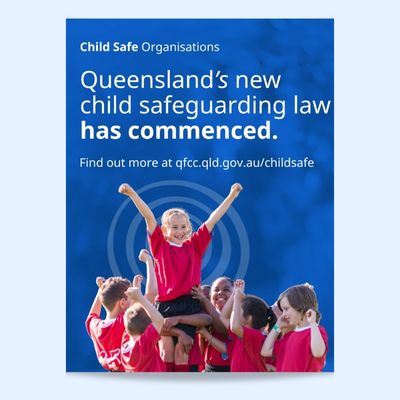 | 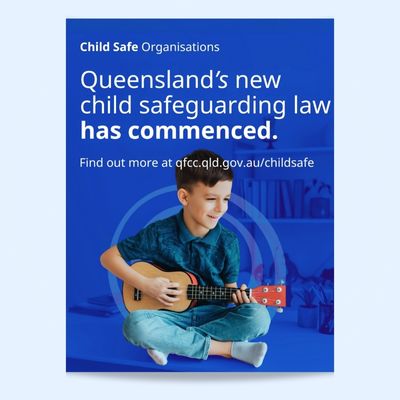 |
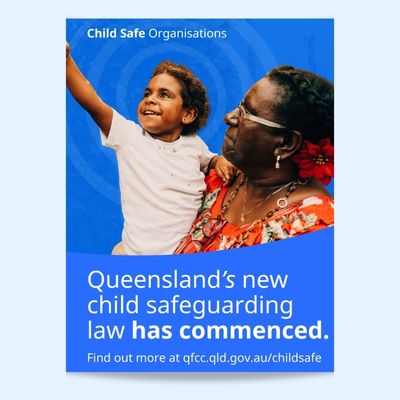 | 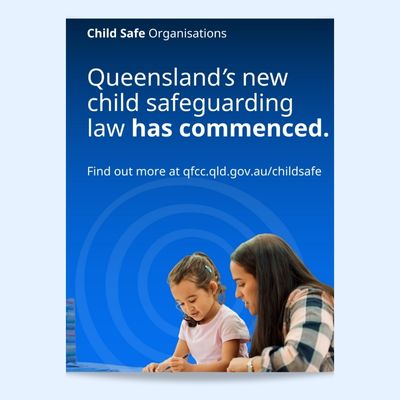 | 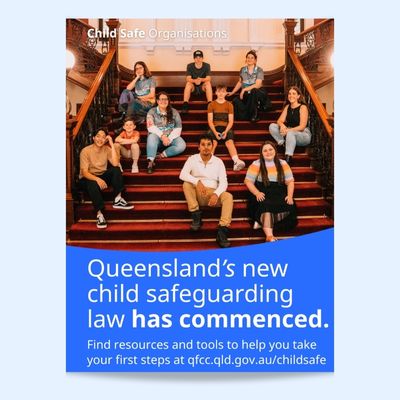 |
Suggested text to accompany images
Does your organisation work with children or provide services and spaces for them? If so, Queensland’s new child safeguarding law applies to you. Start work today to help build a culture of safety and wellbeing for all children in Queensland.
You can find information on if and when you need to comply, as well as guidelines and toolkits to help you implement the Standards, on the Queensland Family and Child Commission website at www.qfcc.qld.gov.au/childsafe.
Is your business or organisation child safe? If your organisation works with or provides services for children, you’ll need to comply with Queensland’s new child safeguarding law.
The Child Safe Organisations system is already in effect for some sectors, and requires businesses and organisations providing spaces or services to children to implement 10 Child Safe Standards to help protect children from harm. Download the implementation resources and take your first steps to get started: www.qfcc.qld.gov.au/childsafe.
To download the images, please click on image, when it opens, right click and 'Save Image As'.
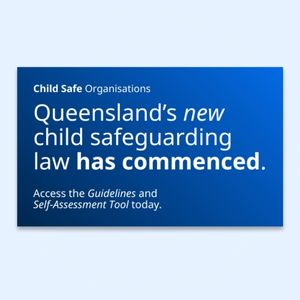 | 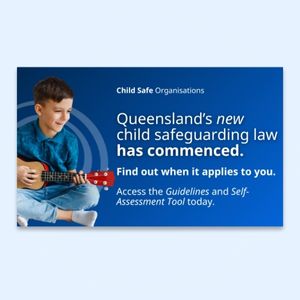 | 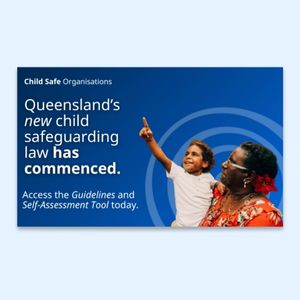 |
Suggested text to accompany images
Are you ready to be a Child Safe Organisation?
Does your organisation work with children or provide services and spaces for them? If so, Queensland’s new child safeguarding law applies to you.
The Child Safe Organisations system aims to protect children from harm when they interact with businesses and organisations. Under the law, businesses and organisations providing services or spaces for children are required to introduce 10 Child Safe Standards, and some will also be required to introduce a Reportable Conduct Scheme.
The law has already commenced for some sectors and once fully rolled out will apply to over 40,000 businesses and organisations across Queensland.
To help you prepare, the Queensland Family and Child Commission has developed resources to help businesses and organisations prepare for the change and meet their obligations under the system. These include implementation guidelines to help you understand:
- the 10 Child Safe Standards and the Universal Principle
- how your policies and processes should look once you have successfully implemented them
- the documents and actions you need to demonstrate compliance with the new laws.
Every organisation will be at a different stage on its journey to being child safe. To help you determine your level of readiness, the Commission has also developed a self-assessment tool, which will help you identify the actions you need to take.
Start work today to help build a culture of safety and wellbeing for all children in Queensland. You can find information on if and when you need to comply, as well as guidelines and toolkits to help you implement the Standards, on the Queensland Family and Child Commission website at www.qfcc.qld.gov.au/childsafe.
Last updated
17 October 2025
